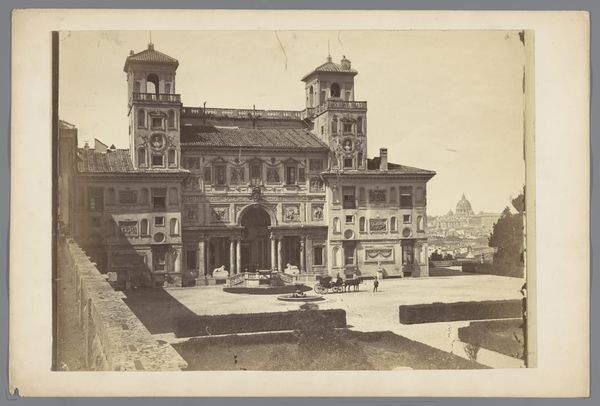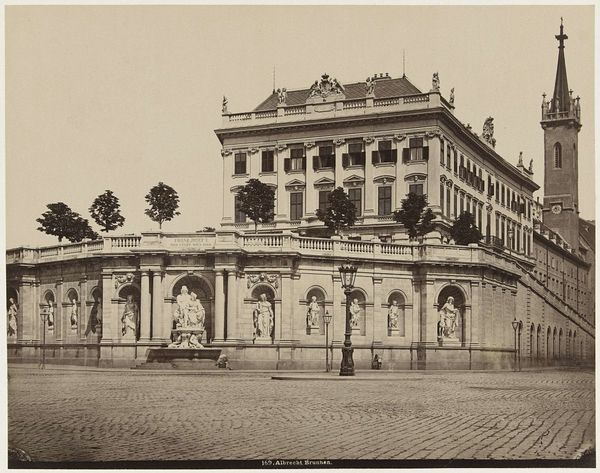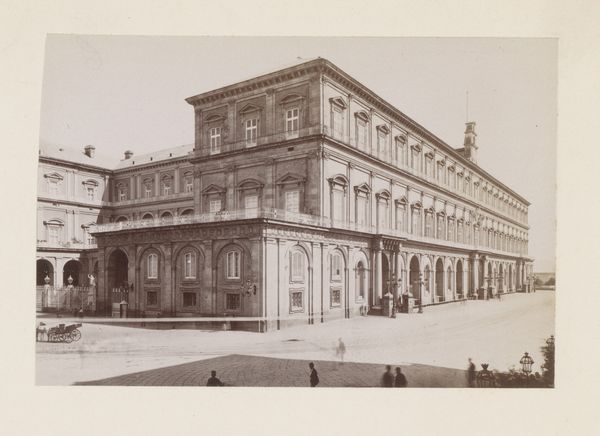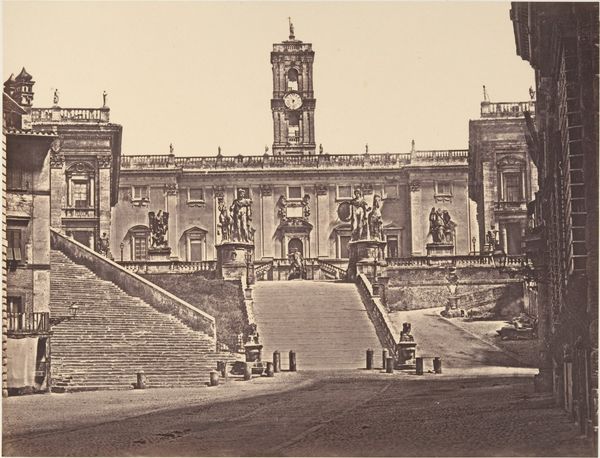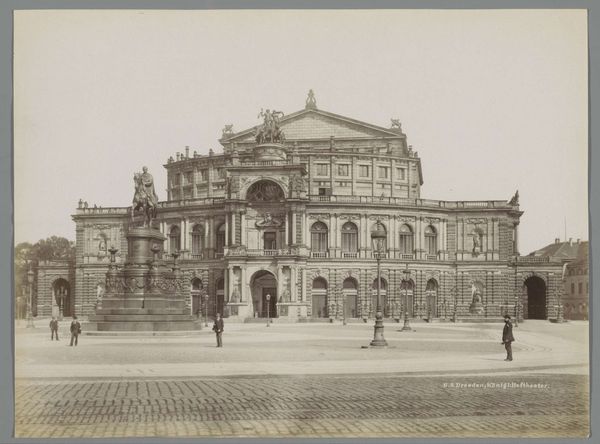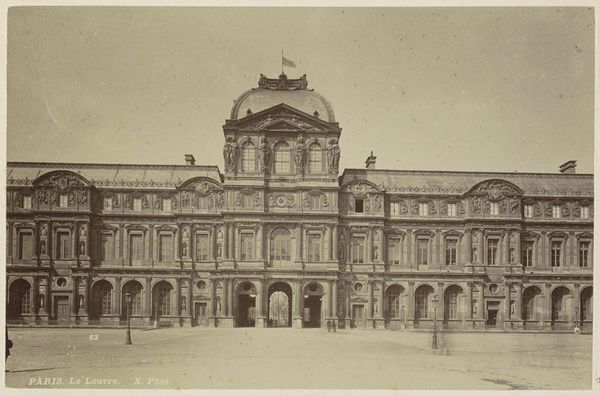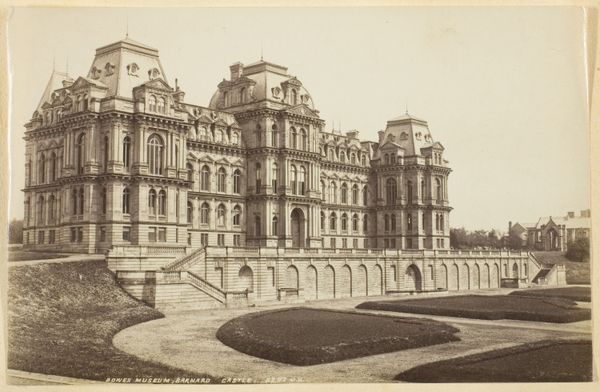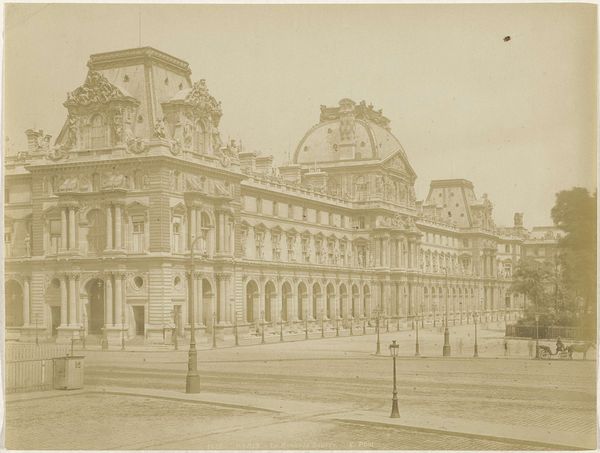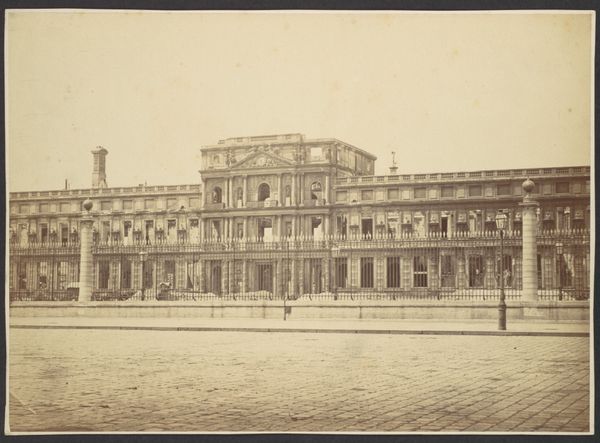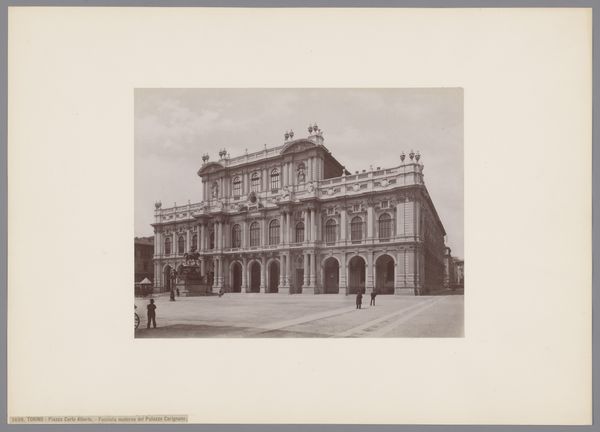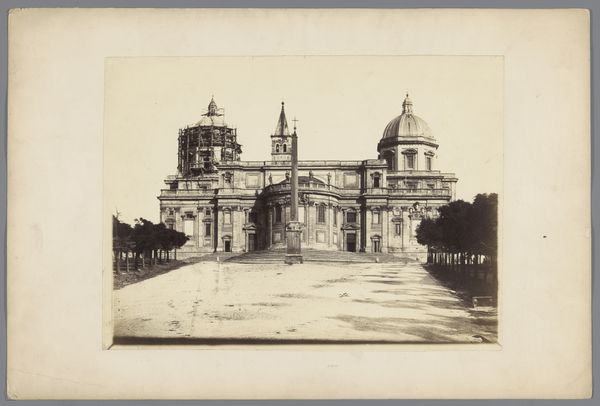
daguerreotype, photography, architecture
#
neoclacissism
#
landscape
#
daguerreotype
#
perspective
#
historic architecture
#
photography
#
cityscape
#
history-painting
#
academic-art
#
architecture
Dimensions: Image: 8 11/16 × 11 5/16 in. (22 × 28.7 cm) Sheet: 12 1/8 × 18 1/2 in. (30.8 × 47 cm)
Copyright: Public Domain
This photograph captures the Villa Medici, adorned with sculptures and reliefs, a testament to the enduring allure of classical antiquity. These architectural elements echo the cultural memory of ancient Rome. Consider, for instance, the recurring motif of the sculpted human form. Here, it serves as a direct link to the artistic ideals of the classical world, reminiscent of ancient statues and friezes. The classical contrapposto pose—weight shifted to one leg—reappears through centuries of artistic expression, embodying a sense of balance and humanism. This echoes in Renaissance paintings, where figures evoke harmony and idealized beauty, yet also in later Neoclassical sculptures, revealing the ongoing dialogue with the past. The façade of the Villa Medici, with its rhythmic placement of sculptures, speaks to the psychological power of symmetry and order. Our minds are drawn to patterns, finding comfort in their repetition and balance. Such compositions, reminiscent of ancient temples, evoke an emotional response rooted in our shared cultural heritage. Ultimately, the photograph of the Villa Medici offers us a glimpse into the cyclical nature of artistic influence. These symbols—sculptures, reliefs, and architectural structures—persist across time, constantly evolving in their meaning, carrying the weight of cultural memory into the present.
Comments
No comments
Be the first to comment and join the conversation on the ultimate creative platform.
